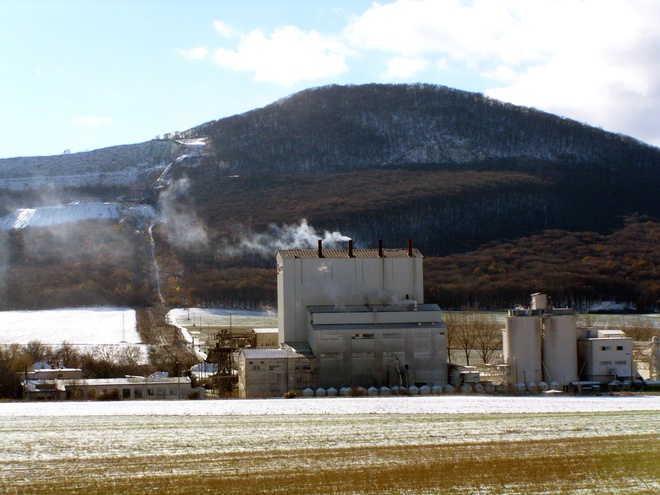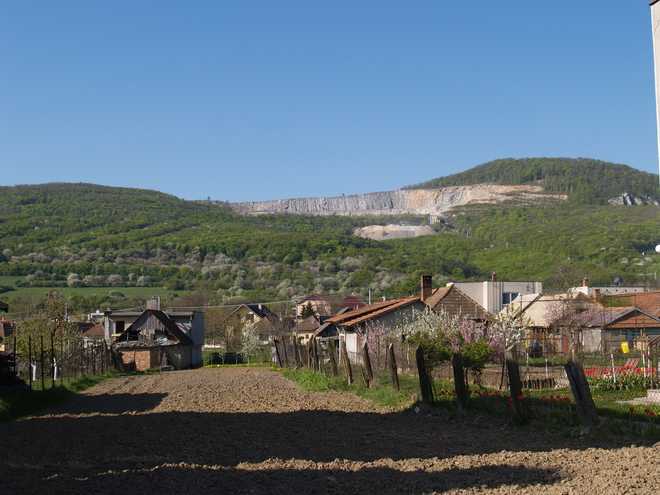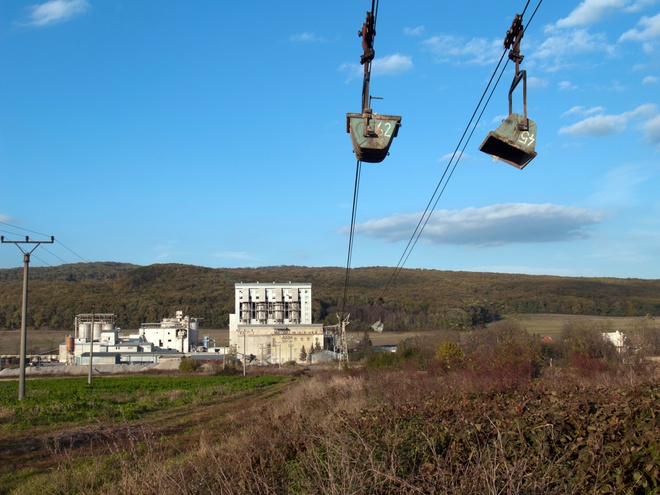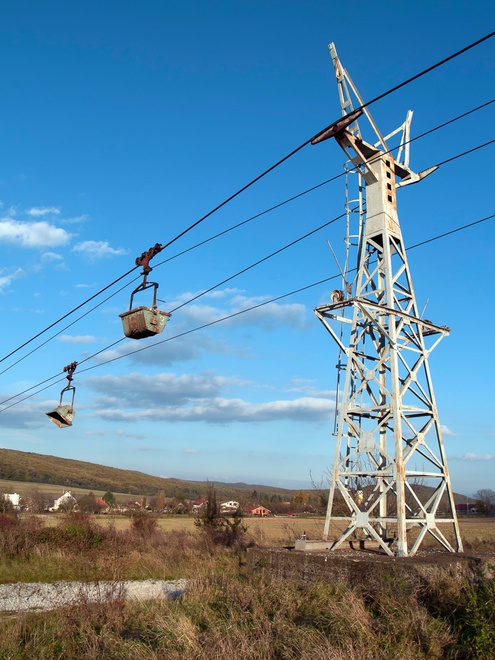Lime Works in Žirany
Lime appears in Slovakia as an important ingredient in construction technology for the first time in Roman times (AD 0–400). After a break of almost five hundred years it was re-introduced on our territory by the builders of the first stone churches; since the 11th century it has been gradually applied in profane and fortification architecture. The beginnings of lime production in Slovakia, however, remain unclear. The Duchcov find of lime kiln from the 9th century still is a unique find.
From the forest border (station No. 31) we continue along the red marking of the Ponitrianská magistrála (0706) into a shallow valley and from here gently ascending to the ridge projecting from the level of Plieška (374.6 MASL). The marked trail is crossed by a number of forest roads until it approaches the forest border after a gentle descent. After about 400 m the way enters the fields north-east of Žirany (in the opposite direction take care of the markings, the forest border is densely overgrown by wood). After about 500 m, on a field road in south-western direction we reach the fence of an abandoned garden and house. The field road makes a sharp bend to the east (left).
Time: 45 min., in the opposite direction 40 min., length: 2.7 km, in both directions medium challenging.

Lime burning spread in the countryside only at the end of the 18th century. It became a traditional, seasonal subsidiary occupation of the inhabitants in regions rich in limestone occurrence. Also the municipality of Žirany is looking back on a long history of lime production. For the first time, lime from Žirany was mentioned in 1605 in connection with the unfulfilled plans for a Catholic University in Topoľčanky. Sixteen lime kilns were reported on this site in a written record from the 18th century. Stone suitable for lime burning was extracted in quarries on the slopes of the Vápenník and Žibrica peaks. Stone from Vápenník was transported on wagons to primitive field kilns on the right side of the road from Žirany to Kolíňany. Archaeologists have uncovered a simple rectangular lime kiln from the 17th century also on the eastern slope of Žibrice Hill.

Geological surveys to explore lime deposits suitable for lime production are connected with the development of Slovakia after World War II. A survey report on lime deposits beneath Žibrica Hill was worked out by the famous geologist Dimitrij Andrusov (1897–1976). Preparation works for the constructions of lime works in Žirany began after proving the existence of sufficient material suitable for lime production, and improving the connection with the railway transportation. Lime production in Žirany was opened on 29 August 1959. The lime works made use of by then modern technology of lime burning using gas from brown coal. In 1973 coal was replaced by natural gas; since 2008 however, coke is made use of. The production did not only supply the home market, but as soon as possible started to be exported to abroad. At the end of the 20th century lime works in Slovakia were privatized and foreign investors entered the market. The Quarry and Lime Works Žirany today belong under Calmit, Ltd, which is owned by the Austrian company Schmid Industrie Holding and the Spanish corporation Calcinor. In Slovakia this international company is known mostly for the European brands Baumit, Austrotherm, and Murexin. The main products of Lime Work Žirany is Feinkalk, a lime used mainly in construction, extraordinarily finely ground with many different uses in building, from the chemical industry to agriculture, as for example the subsidiary lime fertiliser Florakalk. Part of the Lime works is a siding rail and a ropeway conveyer. It was produced by the national corporation Transporta n. p. Chrudim in 1959. With a slope length of 1,660 m, transport speed of 1.8 m/s, and transport capacity of 130 t/h.

